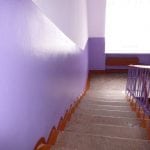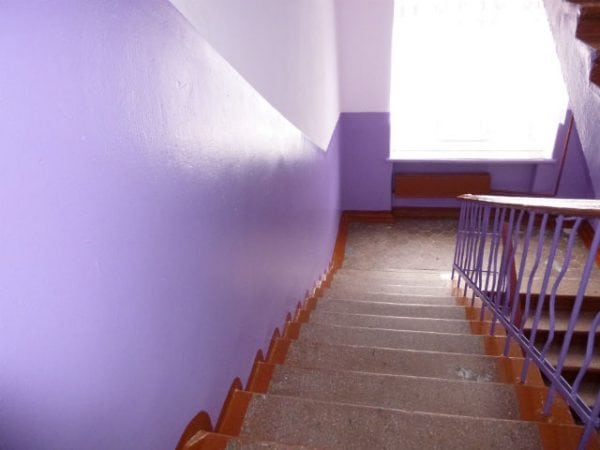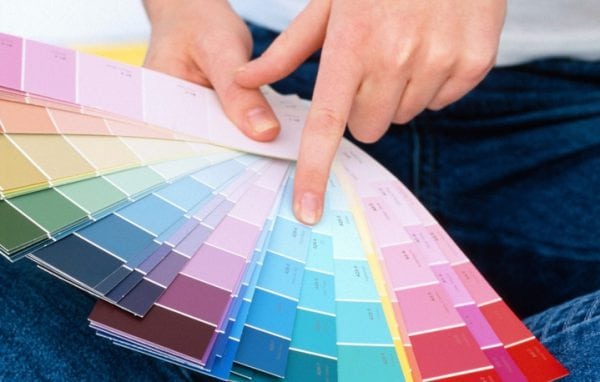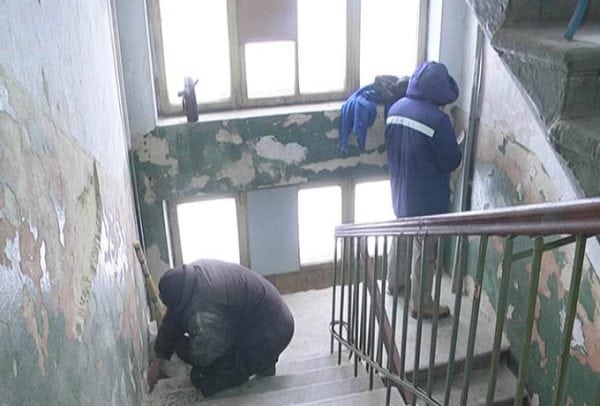Most of the entrances of apartment buildings are a miserable sight: peeling or painted walls with obscene inscriptions, crumbling whitewashed collar, panels faded from time to time, spotted floor. Meanwhile, the Housing Office, which for many years has traditionally referred to a lack of funds.
Maybe it makes sense to solve this problem with your own hands? Especially when there is a mutual understanding of the issue by all the residents of the entrance and the opportunity to work for almost everyone - from small to large. For overhaul enthusiasm, of course, is not enough, but for painting - completely.
to contents ↑We are preparing materials
Bringing the walls into an acceptable form is possible in two ways - by whitewashing or painting them. Everything will rest on financial costs, which must be agreed upon by all residents. Whitewashing is a much cheaper option, but also less practical: few people would like to annually update the surface of whitewashed walls and periodically clean their clothes from white traces of whitewashing.
Therefore, the initiative group should carry out work among the participants, insisting on painting. Moreover, saving in this case is also quite possible.
You need to start by choosing the right paint. Based on the conditions in which the wall covering will be operated, it should meet the following consumer characteristics:
- It is distinguished by high ductility, because in the conditions of sharp temperature fluctuations (and they will still be, even if the staircase is heated), the finished coating will lag behind the wall next year.
- Be convenient to apply with a high-performance paint tool - a roller. Other options should not be considered, because otherwise it would be very inconvenient to work in the stairwell.
- Do not have a pungent smell that will penetrate the apartments.
- Dry quickly, otherwise it is extremely inconvenient to use the staircase, especially for casual visitors and guests.
- It is good to lay down on any foundation (chalk, lime, concrete, brick).
Water emulsion paints most fully meet this set of requirements. They are convenient to use, adhere well to any base, and are affordable.
The disadvantage of such coloring formulations - a small selection of colors - is easily overcome. To do this, you need to purchase special tinting additives of the desired color. These additives are introduced into the paint immediately before its use, the color intensity will be determined by the amount of additive. So you can paint the staircase even in a certain color scheme.
In addition to walls, flooring often requires painting. A stronger mechanical paint is required here. It is most advantageous to use any composition designed for painting roofs: their operating conditions are not simpler than on the floor in the entrance.
What paint to choose for the floor? There are also options that depend on the type of flooring in the entrance. Most often, the floors in the entrance are concrete, much less often - wooden. Acrylic paint is best suited for concrete floors. Unlike other options (polyurethane paint, epoxy compositions), it is one-component, and therefore easy to prepare for work.
It is also good to use latex-based rubber paint. Although it is more expensive, it is recommended mainly for roofs, but it also fits perfectly on other surfaces: wood, cement or concrete. Rubber paint on the walls and staircases of the staircase will be highly resistant to moisture, dries relatively quickly, adheres well to the original surface. The only limitation is that latex paints are not recommended for use at ambient temperatures of less than 15 ° C.
Wooden floors can be painted with any paint other than water based paints. By the way, most painting compounds are also suitable for painting wooden windows.
The color and texture of the painted walls and floor are discussed with all residents, after which they acquire paint and, if necessary, tinting additives to it.
Work Tools
Since these elements of the staircase do not have a complex configuration, it is quite possible to use a paint roller mounted on a long handle. In this case, you do not need a stepladder. However, for painting individual protruding fragments (for example, heating pipes, covers and doors of switchboards), you still can not do without brushes.
In addition, not be superfluous:
- building level;
- putty knife;
- a cord for beating the dividing line (if not the entire wall is painted, but the panel is executed);
- colored crayons;
- broom;
- hammer;
- construction adhesive tape (useful when painting window frames).
to contents ↑Naturally, one should not forget about things that provide normal conditions for workers - mittens, a respirator, a gauze bandage. They will be especially necessary when working on cleaning surfaces from dust.
Work sequence
Even with the satisfactory condition of the previous wall covering, it must be prepared in good quality for painting. If a water-based paint is selected, then before starting work you need to:
- thoroughly clean all surfaces;
- eliminate paint stains;
- putty revealed recesses.
Old paint will have to be removed with a spatula.
Worst of all, if the walls of the staircase were once plastered. Then you need to evaluate the quality of the plaster: if it is behind or somewhere is already missing, then such problem areas should be removed with a hammer, and only then putty.
Separately, you need to deal with the web on the ceilings and flights of stairs. Here a broom on a long handle is useful, which you need to go through all hard-to-reach areas - this is where the cobwebs are the most.
After this, the walls of the entrance are preferably disinfected. Otherwise, very soon dark spots may appear on the painted surface from a fungus that easily forms during sharp fluctuations in temperature and humidity. Such treatment can be done using either an aqueous solution of copper sulfate (the substance is poisonous!), Or the usual tool for cleaning sinks and toilets (Bref, Domestos, etc.). Rinse the floors in the entrance well enough, and then also treat with disinfectant compounds.
Gypsum putty is most suitable for filling walls and floors at the entrance. It is universal, inexpensive in cost, suitable for any subsequent coating, able to easily cope even with fairly deep irregularities.
The putty of the walls is rational only when they will subsequently be completely painted. If you plan to paint only the panels, then the remaining areas will have to be plastered, and this already significantly complicates the repair work and increases their cost. Therefore, oddly enough, the entrance is much more profitable to paint completely than to draw panels on the walls.
When assigning the priority of work, it is worth recalling that the painted floor is the most inconvenient for movement. Therefore, it should be painted in the evening and only after the painted walls are completely dry.
Work is usually carried out with a paint roller. This will provide the desired performance and allow the final coating to be more uniform.Lastly, already with a brush, areas of the floor and walls that are difficult to access for the roller are painted.It is better to paint floors and walls in spring or autumn - such a period of time is most comfortable for these works.








